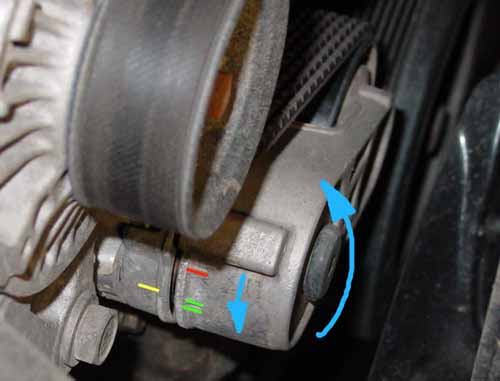How to Check a Serpentine Belt
Please note: This writeup was completed on my 2001 Jeep TJ with a 4.0L I-6 engine (it should also apply to Cherokees, Grand Cherokees and Wranglers with the 4.0L). Although engine layout/design will vary amongst auto-manufacturers, the basic ideas and principles in this writeup should apply to nearly any vehicle with a serpentine belt system.
A serpentine belt is made of rubber molded over a core of stranded natural/synthetic fiber cords. With time, the rubber invariably will dry rot and crack. In some cases the belt/cords will stretch and if the belt doesn't break first, the slop from the stretching could cause your vehicle accessory systems (electrical, power steering, water pump, AC) to not function properly. You should inspect your belt at every oil change or have someone check it for you so that you won't get stranded from a broken, rotten, old serpentine belt.
If you check your belt out and find that you need to replace it, I have done a writeup on how to replace your serpentine belt.
Tool/Supply List
- SAFETY GLASSES!
- Shop Light or Flashlight
The Inspection
Open the hood and get out the shop light. If you aren't sure where your belt tensioner is, look around and find the "Belt Routing Diagram" under the hood, it should help point you in the right direction.
In the picture below, I have colored the belt wear indicators, yellow, red, and green; in reality these wear indicators are raised metal lines that are cast into the parts. The blue arrows indicate the direction the tensioner will move as the belt stretches with age. Think of the yellow stripe as an indicator needle on your fuel gauge. Think of the twin green stripes as a "FULL TANK" or the belt is like new. Imagine the red stripe as an "EMPTY TANK" or "time to replace the belt.
In this picture, you can see that although my belt has 12,000 miles on it is still in the green. As the belt stretches and gets longer, the spring-loaded belt tensioner will rotate, in this case counter-clockwise. As you can see, that will eventually bring the yellow indicator to the red "replace" stripe. This is because at/past the red mark, the belt tensioner is near the end of it's available travel and the manufacturer of your vehicle has deemed it unsafe to go any further without replacement of the serpentine belt.
It is also possible for the belt-wear indicator gauge to show that your belt it in "like new" condition, but the belt may still be in poor condition and require replacement. This is simple to check; look at the grooves in the belt for signs of cracking along the length of the grooves, any pitting or chunks of the grooves missing. You can get a better idea of it by twisting on the belt and/or checking for longitudinal-cracks at curves in the belt route. Cracks across the belt are normal and acceptable, provided they aren't 90% of the way through the belt.

Page created on 7/14/2003
Last updated on 11/5/2004